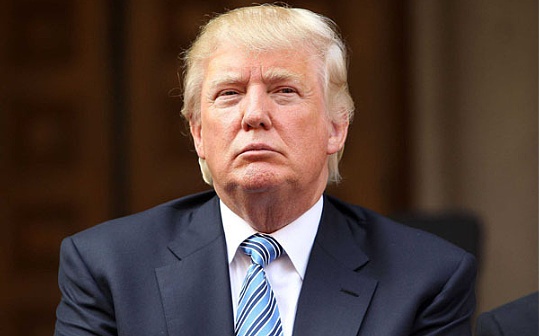Is DeFi a new safe haven amid the 125% tariff panic?

Reprinted from panewslab
04/15/2025·9DThe game between the United States and China has once again entered a stage of substantial confrontation, with automobile tariffs reaching 125% in one go. This type of tariff war is not new, but this "upgraded version" has indeed made the capital market feel the typical "global resonance" pressure again.
Stocks, commodities and bond markets all have experienced risk aversion to varying degrees. At the same time, the performance of the crypto market is not that severe. This made me think about a question:
Is DeFi regaining the role of "safe haven" in this structural friction?
I used to keep this statement, but now my ideas are slowly changing. Here are some of my observations and thoughts:
Taxation "loosen" has made DeFi certainty appear
In March, the U.S. Senate passed a resolution that is very friendly to DeFi users:
Temporarily overturn the IRS regulations requiring on-chain agreements to report user transactions.
This is actually a very important signal. Although it cannot be fully understood as "tax exemption", it means that the tax compliance pressure on on-chain interaction has been relieved in the short term.
This releases a subtle but critical window: users can rebuild confidence in on-chain asset allocation in an environment with less regulatory friction.
To me, it's just like in the past when international capital used offshore markets as a "low friction channel", and DeFi is likely to be taking on the prototype of this role.

Structural returns are the logic that is more worthy of attention at this
stage
The greater the uncertainty of the market, the more capital tends to look for a path to "structural determination" - even if the returns are not that high.
That's why staking products are starting to regain attention. You pledge your assets on the main network and get rewards from the protocol layer. The logic is clear, the path is predictable, and the volatility is relatively small.
Especially in an ecosystem like Avalanche, on-chain staked tokens (such as sAVAX) can continue to participate in other DeFi activities, such as lending or liquidity mining. This way users not only retain staking profits, but also do not sacrifice liquidity completely.
This actually forms an on-chain logic closer to "structural financial management":
The benefits come from the underlying protocol, and the risks are concentrated in the mainnet security and DeFi contract layers, with paths and expectations reusable and traceable.
When compliance expectations are unknown, on-chain transparency becomes a
moat
No one knows how to collect and supervise taxes in the future, but one thing is certain: protocols with complete records and clear structure on the chain will definitely have more long-term survival than those grayscale operations.
BENQI, which I have been paying attention to recently, is not considered a hit project, but its path is very standard:
User pledges AVAX → Obtains sAVAX → It can be used for collateral, lending, and liquidity pools. The entire asset path can be checked and the contract behavior is public, which is very friendly to future compliance.
This combination of "structural + transparency" is actually a moat at the current stage. You may not be able to get super high returns immediately, but you can gain stability in the time dimension.
The way of structural combination is changing from tool collage to asset allocation system
In the past, many people used DeFi to "find tools and arbitrage", but today more and more people are building "asset structure".
For example:
- You pledge AVAX to obtain sAVAX;
- Lend stablecoins with sAVAX collateral;
- Stablecoins to do liquidity mining, or participate in on-chain RWA projects;
- Finally, this structure is automatically compounded.
The entire path is not complicated, but behind it is no longer "speculative behavior", but a structural return model on a chain, which can even be compared to "actively managed portfolio assets".
From this perspective, DeFi is slowly moving away from the impression of "high risk and high volatility" and evolving towards more mature financial instruments.
This is a stage worthy of serious construction of the "on-chain
structure"
My current attitude towards DeFi is:
It is not a window period for huge profits, but it may be the most worthy stage to build structure and accumulate positions before the next slow bull start.
If you believe that macro uncertainty will continue;
If you don't want to put all your assets in a high volatility target;
If you hope that taxation, compliance, and on-chain income can be gradually opened up in a system in the future—
Then, building a "structural income combination" on the chain may be an action worth starting.
BENQI and sAVAX are not necessarily optimal solutions, but their paths and mechanisms do have the characteristics of "interpretable, composable, and iterable" and can become part of this structural experiment.
I don’t know when the next cycle will come, but now I start building the structure, it will never be in the wrong direction.

 jinse
jinse